Top speed 235 km/h Length 9.6 m Retired 1944 | Wingspan 11 m Introduced 1935 First flight 1931 | |
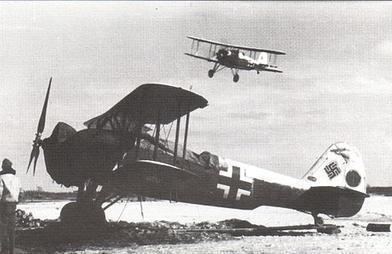 | ||
Heinkel he 50 war thunder
The Heinkel He 50 was a German World War II-era dive bomber originally designed for the Imperial Japanese Navy. Serving in Luftwaffe pre-war dive-bombing units, the He 50 served almost until the end of World War II as a night harassment bomber.
Contents
- Heinkel he 50 war thunder
- Design and development
- Operational history
- Variants
- Operators
- Specifications He 50A
- References
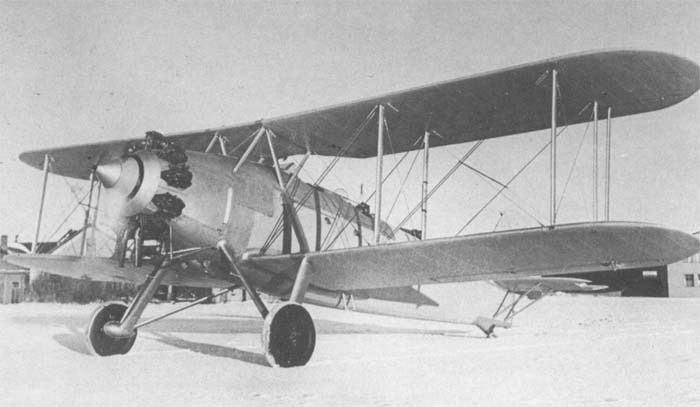
Design and development
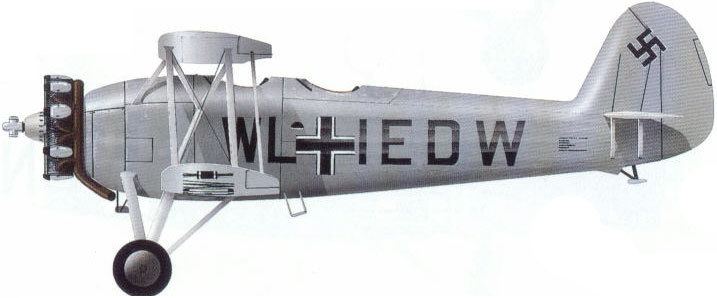
In 1931, the Japanese Navy placed an order with the Heinkel aircraft company for a two-seat dive bomber capable of carrying 250 kg (550 lb) of bombs, stressed for catapult launches, and capable of using either wheeled or float undercarriages.
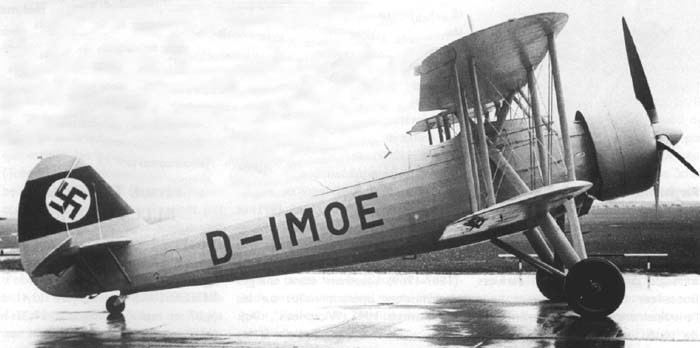
A prototype, the Heinkel He 50aW, was completed in the summer of 1931. It was a biplane of mixed construction. The aircraft had twin-floats for an undercarriage and was powered by a Junkers L5 inline engine. The engine was found to be underpowered. A second prototype, the He 50aL, was built, which was powered by a Siemens Jupiter VI radial engine and had a wheeled undercarriage. A second He 50aL was built and re-designated He 50b. Based on the He 50b, a third prototype designated Heinkel He 66 was completed for the Japanese Navy, and used as the basis of the Aichi D1A.
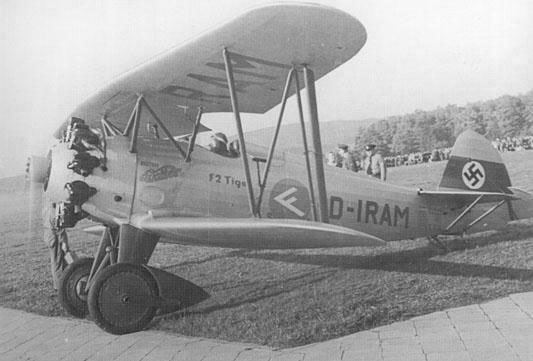
The He 50 was an equal-span biplane based on a rectangular-section fuselage with a primary structure of welded steel tube construction, faired out to an oval shape by wooden formers and stringers and covered with fabric except in the extreme nose, which was skinned in light alloy. The wings were fabric-covered wooden construction with a marginal stagger and very slight sweep, carrying ailerons on all four panels.
Operational history
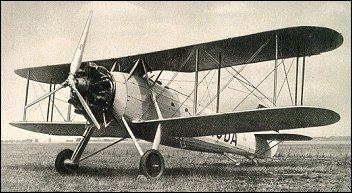
The He 50aL was re-designated He 50 V1 and demonstrated to the German Defence Ministry in 1932. This resulted in an order for three development aircraft, and a production batch of 60 He 50A-1 aircraft, which were built during the summer of 1933. China placed an order for 12 He 50As, but modified with an engine cowling added and designated He 66b. These aircraft were commandeered by the Luftwaffe and re-designated He 50B. In 1935, the He 50 was delivered to the Luftwaffe's first dive bomber unit, and later partially equipped nine other dive-bombing units. The He 50, however, was steadily replaced by the Henschel Hs 123 and Junkers Ju 87, after which He 50s were transferred to dive bomber training units.
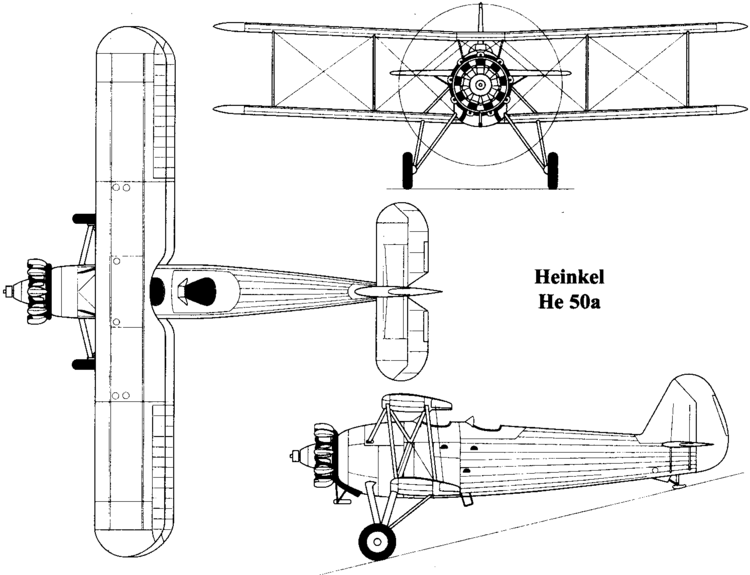
In spring 1943, following the success of the Soviet VVS's Night Witches units against the Wehrmacht Heer's frontline encampments while flying their Polikarpov Po-2 biplanes on nocturnal harassment raids, surviving He 50s were rounded up from training schools and delivered to night ground attack units operating on the Eastern Front. The He 50 was used to conduct night harassment sorties on the Eastern Front until September 1944, when the units were disbanded.
Variants
Operators
Specifications (He 50A)
Data from German Aircraft of World War II and The Complete Encyclopedia of World Aircraft
General characteristics
Performance
Armament
